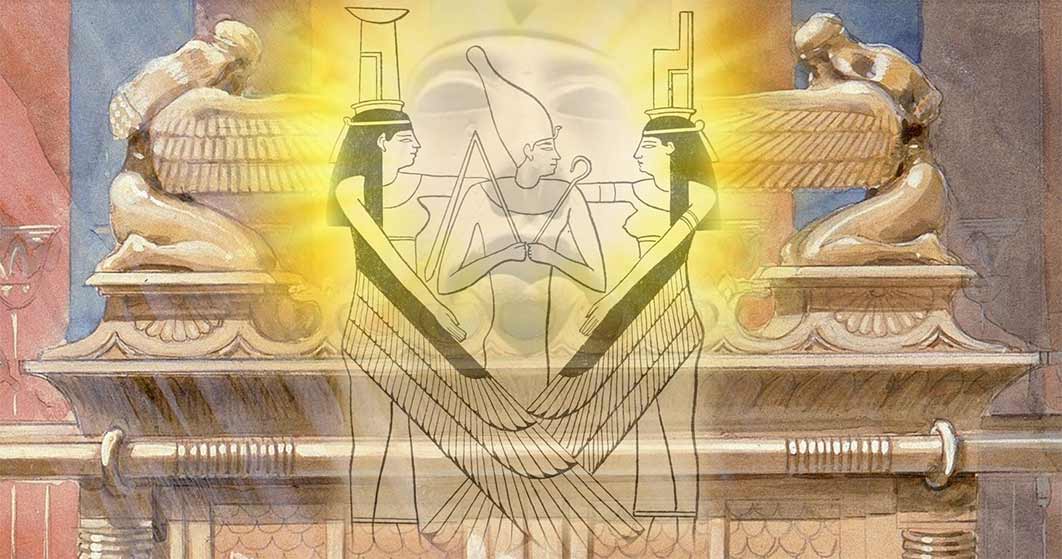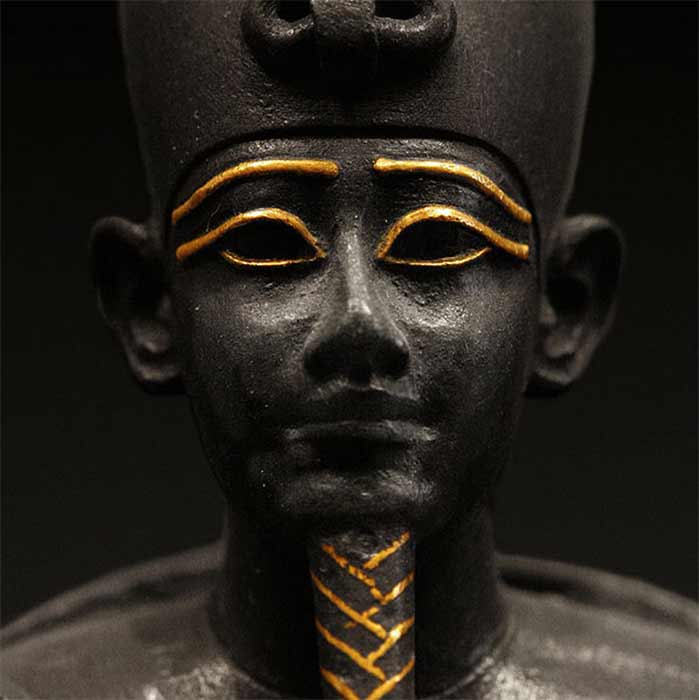
Was the Ark Of The Covenant A Coffin – Secret Link To Osiris God Of The Dead
Why does the Bible refer to the Ark of the Covenant as a coffin? Was someone buried in it? Was it a symbolic coffin, or even God’s coffin? The Bible describes the Ark as a sacred chest of wood and gold, built at Moses’ direction from a heavenly vision to house the Ten Commandments. It has long held a special place in the hearts of archaeologists and explorers, and it continues to remain at large after 2,600 years. It also remains cloaked in mystery, especially as to why the Bible refers to it as a ‘coffin’ (aron, אֲר֖וֹן). When the Greeks translated aron in the Septuagint, they used the word kibotos, a ‘large box/chest’, and when later translated into Latin, the word arca was used, meaning the same thing. This became ‘ark’ in English.

Osiris (664 and 332 BC) Louvre Museum (Public Domain)
Osiris God Of The Dead
The current author traces the Ark’s secret connections back to Osiris, the Egyptian god of the dead. Osiris was the most popular god in ancient Egypt, and as scholar Theodore Godlaski describes: “Osiris is at once both the best known and the most mysterious of the gods of the Egyptian pantheon. He is a god, yet functions as a man. He is immortal and yet dies. He is restored to life, once in this world and again in the afterlife. He is royal and yet, through him, access to a life beyond life is made available to all and not just the elite.”
The myth of Osiris is the most well-known of Egyptian myths, and was related already by Plutarch and Herodotus two millennia ago. In the briefest of strokes, Osiris was the first king of Egypt, who brought all civilizing arts to the people – law, music, agriculture, viticulture, etc. His brother Set was jealous and murdered him, first by sealing him in a wooden coffin and casting it into the Nile, and when that failed, by hacking him up into pieces. His wife Isis, found and bound those pieces, making the first mummy, and magically resurrected the king, who became Lord of the Underworld.
Now, the Bible depicts Moses as fighting against the traditional gods of Egypt, so it remains a baffling mystery as to how the Ark of Yahweh could retain elements of Osiris. Nevertheless, the Ark retains secret, purposeful links back to this god of resurrection. It all begins with the identity of the Ark’s creator, Moses, which leads back to his former life as the Pharaoh Akhenaten, who fascinatingly once considered himself a ‘New Osiris’ to his people.

Joshua passing the River Jordan with the Ark of the Covenant by Benjamin West (1800) (Public Domain)
Coffins Of The Patriarchs And Connections To Rebirth
The first mention of the Ark comes in a vast vision of gold and grandeur from God to Moses (Exodus 25: 10-22): “Have them make an ark (“aron” - אֲר֖וֹן) of Acacia wood—two and a half cubits long, a cubit and a half wide, and a cubit and a half high. Overlay it with pure gold, both inside and out, and make a gold molding around it … Make an atonement cover of pure gold … Place the cover on top of the ark and put in the ark the tablets of the covenant law that I will give you. There, above the cover between the two cherubim that are over the Ark of the Covenant law, I will meet with you and give you all my commands for the Israelites.”
This word used for Ark is aron – אֲר֖וֹן, pronoun aw-rōne’, and means ‘coffin’. It appears in Genesis 50:26: “So Joseph died at the age of a hundred and ten. And after they embalmed him, he was placed in a coffin (aron) in Egypt.” Much earlier in the story, his father Jacob and his entire family had moved to Egypt at Joseph’s request, and when Jacob finally died, Joseph led a procession back to Canaan to bury him. On their way, a mysterious event occurred: “ when they reached the threshing floor of Atad, near the Jordan, they lamented loudly and bitterly; and there Joseph observed a seven-day period of mourning for his father. When the Canaanites who lived there saw the mourning at the threshing floor of Atad, they said, “The Egyptians are holding a solemn ceremony of mourning.” (Genesis 50: 7-11).




